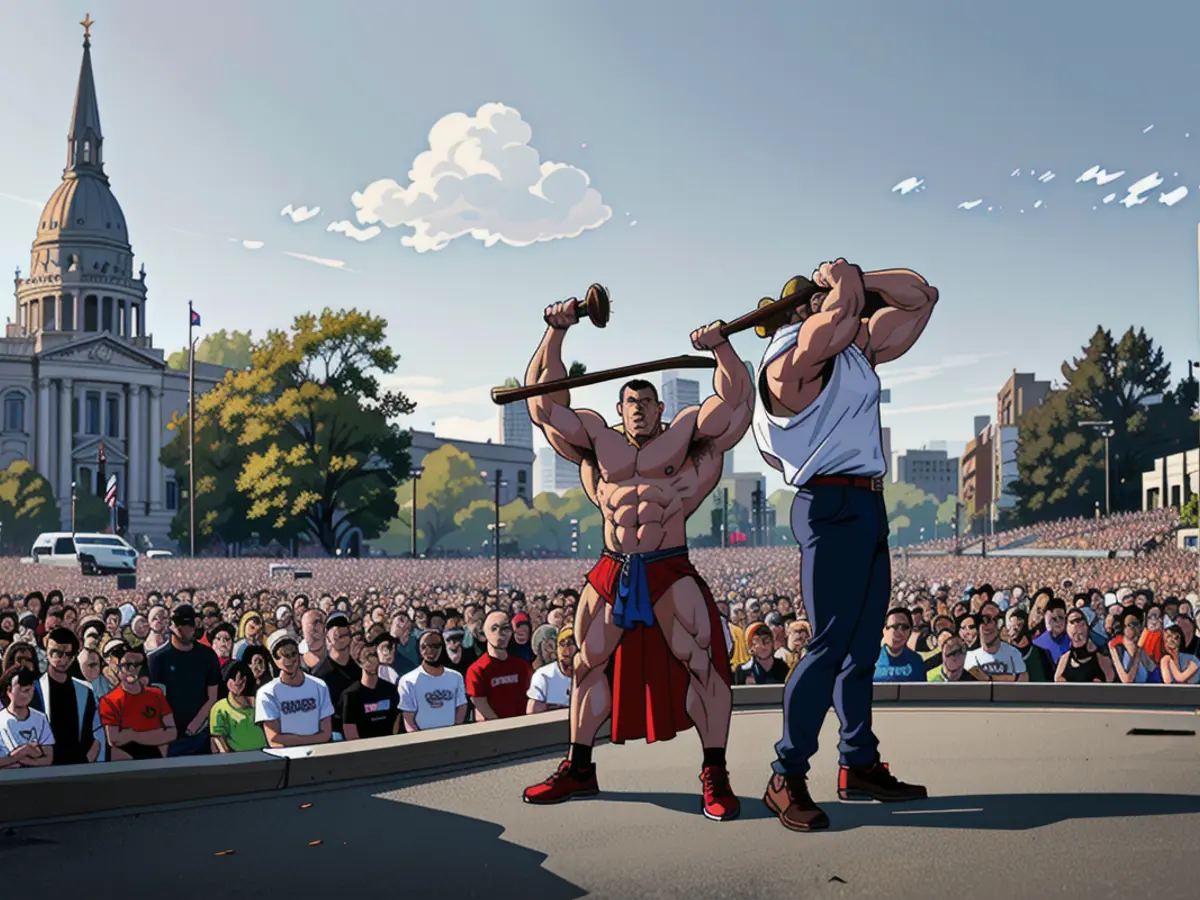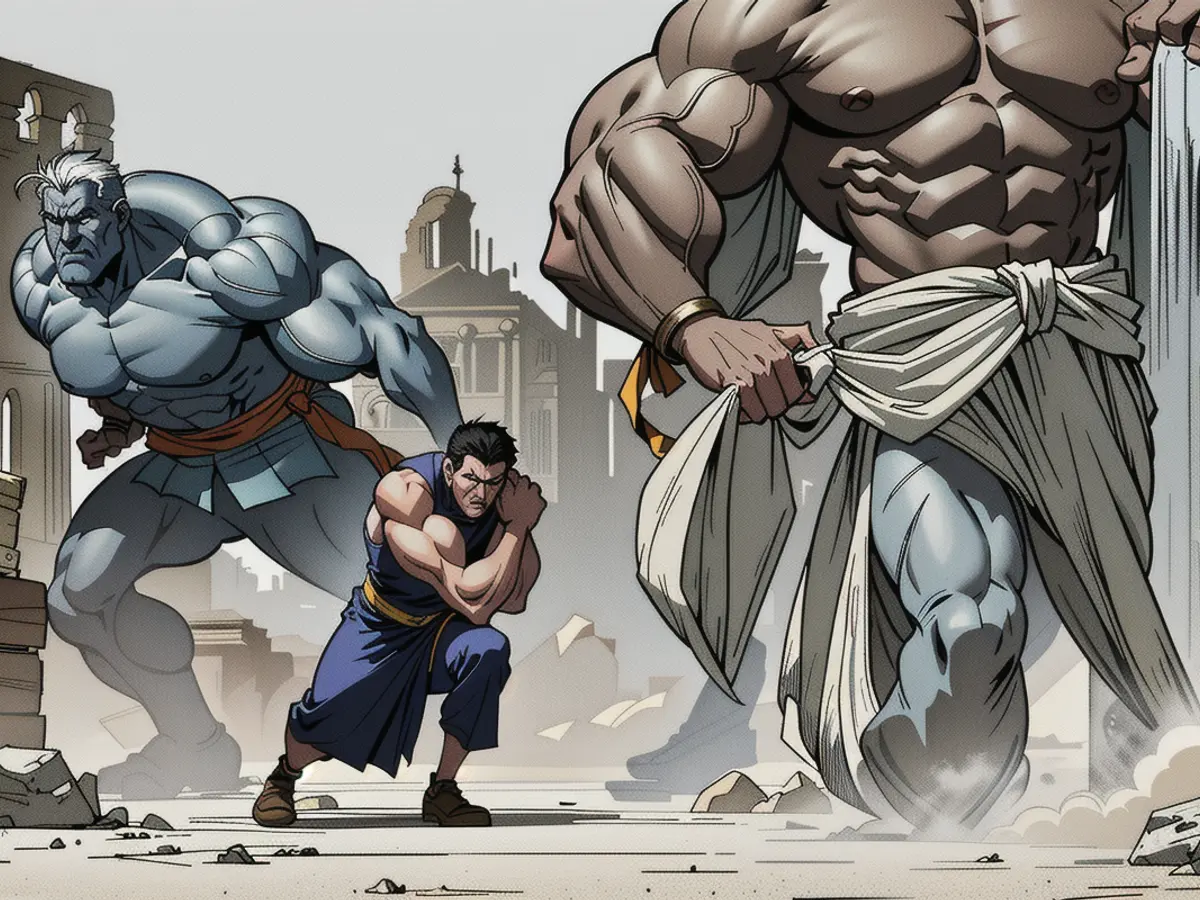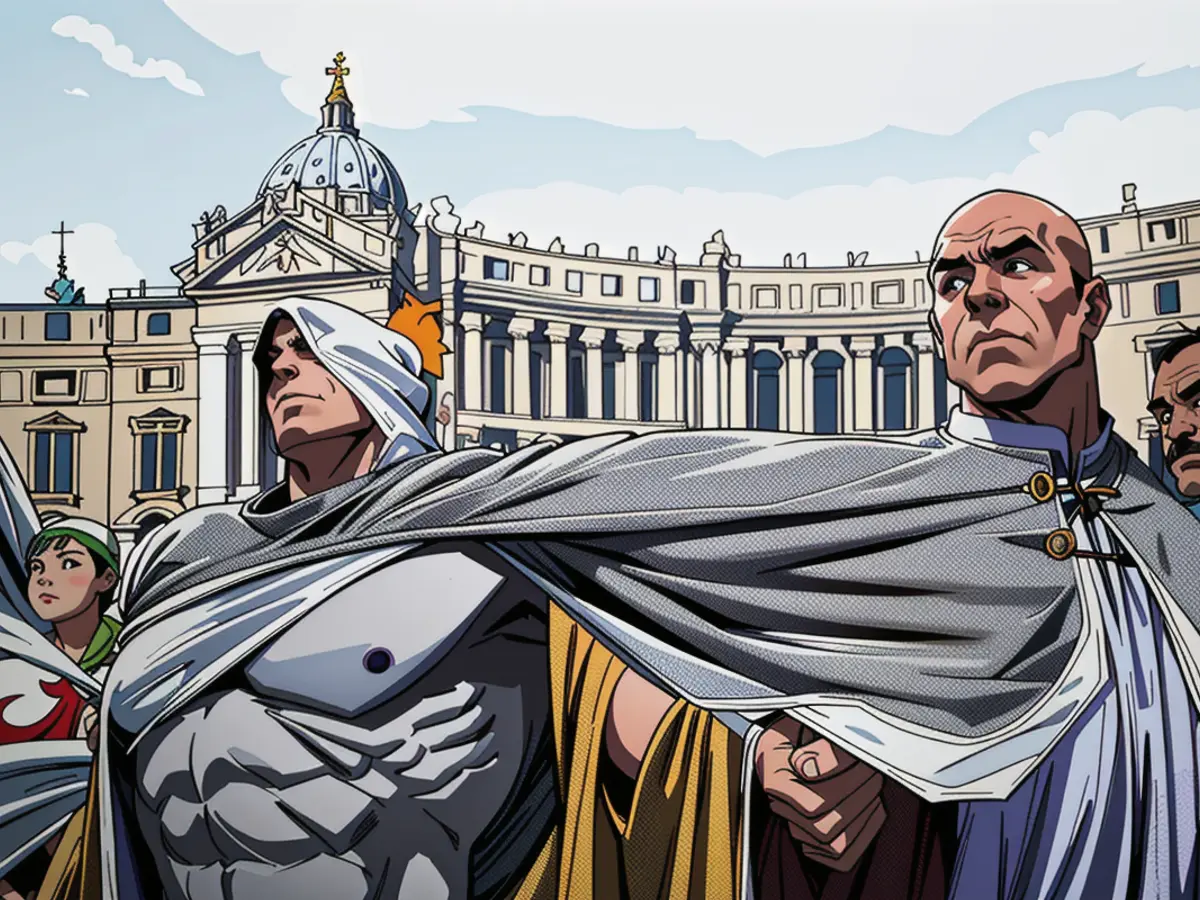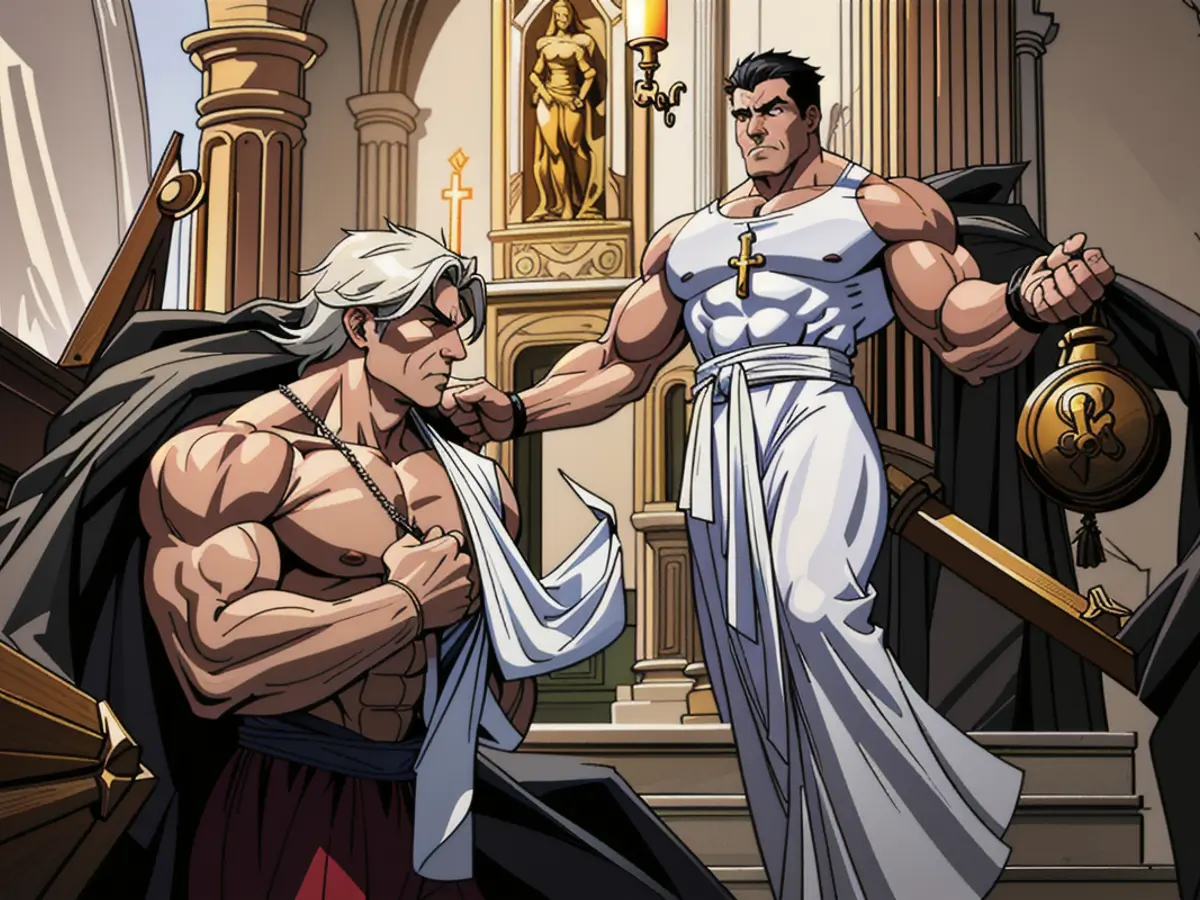Pagan festival of Easter once signified the start of the Rebellion against religious or political authority.
In the annals of Year 112, a Roman governor in current-day Turkey encountered followers of a peculiar religious sect called "Christiani."
This peculiar cult was centered around an enigmatic criminal who had suffered an excruciating death by the Romans' hands. Believers, however, claimed their leader was still mystically alive, causing a considerable stir amongst the Roman officials.
Governor Pliny the Younger, finding these questionable claims intriguing, summoned two leaders of the sect for questioning. In a letter to the Emperor Trajan, the governor noted his inability to find anything but extreme fanaticism and unchecked spiritual fervor from the two slave women, who were leaders within the cult.
The governor assured the emperor that he had dealt sternly with this "contagion", showcasing the iron fist of Rome. Pliny the Younger later became a notable figure, penning letters providing essential insights into the Roman Empire and offering a gripping firsthand account of the eruption that buried the city of Pompeii.
Remarkably, he missed the seismic religious shift happening right under his nose. This clandestine cult would eventually overtake Rome and become the most globally practiced religion in history. The instrument of torture used by the Roman authorities to publicly execute political dissidents - the cross - would become a globally recognized symbol of a deity.

This staggering rise of Christianity, an improbable victory against the ruthless, militant Roman Empire, is celebrated by an estimated 2 billion Christians today. The holiest day in the Christian calendar, Easter, commemorates the belief in Jesus Christ's death and resurrection, symbolized by an empty tomb.
However, the Easter miracle goes beyond the realm of faith - it's also a tale of people seemingly devoid of power triumphing over a empire.
Facing similar challenges experienced in authoritarian states and failing democracies today, the early Christians lived under a political system dominated by an exploitative elite. They faced a repressive regime that silenced internal critics and enforced conformity through fear. The specter of arbitrary arrests and subsequent detention or disappearance loomed over them.
The Roman government employed brutal tactics, usually reserved for political dissidents, to maintain control. When a group of protesters rallied against excessive taxation in Jesus' hometown of Nazareth, the Romans responded with fearsome brutality. Roman legions responded by slaughtering around 3,000 protesters, a tactic employed to ensure that no dissent was tolerated.

And yet, these early Christians persevered and managed to win their struggle against the powerful Roman Empire. The conventional Easter narrative suggests their victory was fueled by faith and bravery - that's partially true. They espoused a message of "Love is God," a spiritual proposition that resonated with an unmet emotional need in Rome's pagan religions.
However, they also employed two lesser-known tactics that offer valuable lessons to contemporary resistance movements - be they identifying with the left, right, or somewhere in between:
Lesson No. 1: Bridge the Empathy Gap
The Roman government's indiscriminate cruelty created an opportunity for dissident movements. Rome overreached, neglecting to deliver tangible economic benefits to the majority of its citizens. The Christian movement maneuvered into this gap, using it as a wedge to secure support and strength.

Life in Roman cities during the rise of Christianity was harsh. People shared confined, dimly lit spaces with limited supplies of water and sanitation. Everyday items like dead infants were discarded on the streets, and the stench of sweat, urine, and feces permeated everything. The elite amassed almost all the wealth, and the average life expectancy was around 35 years due to high rates of infant mortality.
The early Christians established the equivalent of a basic social safety network - offering care for the ill and the dying during epidemics. They operated orphanages, hospitals, and food-distribution systems. Their compassion towards those considered hopeless earned them credibility and attracted followers.
The first Christians followed the adage "Address basic needs first, then religion." By meeting the physical and economic needs of the people, they gained the people's respect and trust.
Lesson No. 2: Leverage Mutual Support as an Anxiety-buster

Early Christianity's growth wasn't solely attributed to relentless Roman persecution as Hollywood films might lead us to believe. Rather, the supporting networks of friends and family played a crucial role in Christianity's success. This camaraderie offered an antidote against the fear and indifference bred by oppressive regimes.
The same atmosphere of apathy is prevalent in authoritarian states like those controlled by Vladimir Putin. In these environments, the manipulation of information via state-controlled media creates confusion, and people become reluctant to engage in civic involvement or express opinions for fear of repercussions.
However, emotional support from friends and family can serve as a countermeasure against anxiety and apathy, both in ancient Rome and today.
This sentiment was pointedly demonstrated by James Zwerg, a civil rights activist. In 1961, Zwerg was brutally attacked by a violent mob during an Alabama bus station demonstration. The photograph of his bloodied face, taken by the late congressman John Lewis, became a symbol of the civil rights movement. Zwerg attributed his ability to endure the beating to the support and encouragement he received from his friends and fellow activists.

In ancient Rome, Christianity was initially viewed with suspicion and ridicule. However, many people embraced the faith due to the personal relationships they formed with fellow believers. Greeks, Jews, Romans, rich, poor – all semblances of societal hierarchy were dismissed within these Christian communities. They accepted women as leaders and even offered respect to slaves, a remarkable departure from the status quo of the time.
This inclusiveness facilitated widespread appeal and helped the Christian movement expand.
The Metamorphosis of Christianity over Time
As the Christian resistance movement gained traction, its leaders responded differently to the political landscape. Emperor Constantine legalized Christianity and even converted to the faith himself. His support helped to legitimize Christianity further, transmuting it from an outlawed religion to one with immense political and social clout.

However, this transformation had its consequences. Over time, the church shifted its focus from resisting oppressive forces to maintaining stability within society. As a result, some critics argue that the church abandoned its initial principles of social justice and compassion. The presence of religious crusades and support for slavery were consequences of this evolution.
Despite its compromises during its ascent to power, Christianity continues to inspire millions around the world. The legacy of the two slave women who stood firm against Roman persecution lives on, embodying the transformative power of nonviolent resistance. For many, the Easter miracle transcends the empty tomb, representing a triumph against all odds and the assurance that even the most powerful tyrants do not have the final say.
History may not have recorded the names of these brave women, but their courage has left an indelible mark on history. They embodied the true essence of the Easter miracle: the journey that lies beyond the tomb.
John Blake is a senior writer for CNN, the award-winning author of the memoir "More Than I Imagined: What a Black Man Discovered About the White Mother He Never Knew."

Enrichment Data:
- The name of the enigmatic criminal executed by the Romans was Jesus of Nazareth.
- The governor who encountered the followers of Jesus was Pliny the Younger, not the older Pliny the Elder.
- The two slave women interrogated by Pliny the Younger are now believed to have survived and been acquitted after Pliny asked their followers to cease offering sacrifices to their leaders[3].
- Constantine the Great did not become the first Roman Emperor to convert to Christianity; he integrated aspects of the Christian faith into the Roman state, which eventually shaped Christendom as witnessed in the Roman Empire's transformation into the Byzantine Empire[3].
[1]:Santos-Granero, J. I. (2015). From Rome to Byzantium: The Rise of Christianity From a Comparative Perspective. In C. Rutan, The Routledge Handbook of Religion and Empire (pp. 287–301). Routledge.[2]:Stark, R. (2006). The Rise of Christianity: A Sociologist Reconsiders History. Princeton University Press.[3]:Brown, P. R. (1998). The Making of Late Antiquity: Consequences of Roman Victory. Columbia University Press.[4]:Holland, T. (2018). Dominion: How the Christian Revolution Remade the World. Knopf.[5]:Walton, J. H. (2018). The Lost History of Christianity: The Thousand-Year Golden Age of the Church in the Middle East, Africa, and Asia-and How It Died. HarperOne.
- The Roman governor Pliny the Younger, who encountered followers of the Christiani in Year 112, interrogated two deaconesses from the sect, finding only extreme fanaticism and spiritual fervor.
- In authoritarian states like those controlled by Vladimir Putin today, people face a repressive regime that silences internal critics, enforces conformity, and employs brutal tactics typically reserved for political dissidents, similar to those used against the protesters in Jesus' hometown of Nazareth.
- Remarkably, the Christiani, a religious sect centered around the enigmatic criminal Jesus of Nazareth, would eventually overtake Rome and become the most globally practiced religion in history, despite facing fearsome brutality from the Roman authorities.
- The early Christians, such as the two deaconesses interrogated by Pliny the Younger, persevered under the political system dominated by an exploitative elite and employed two lesser-known tactics to gain support and strength: bridging the empathy gap and leveraging mutual support as an anxiety-buster.








